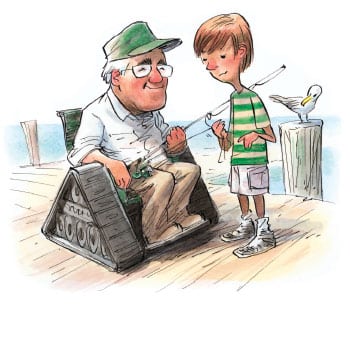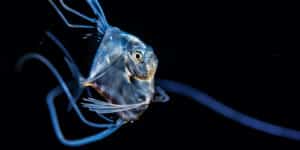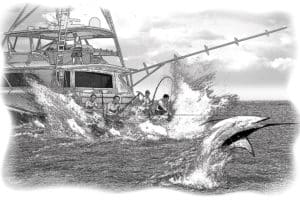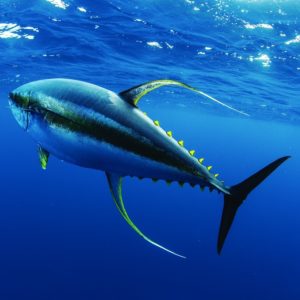
tred barta chair
I remember spending days by a swimming pool setting hooks on 2-pound line, with a diver in the deep end recording the hook penetration in balsa wood. I’d also spend hours in complete darkness in my basement, lifting 2-, 4- and 6-pound weights until the line would break.
It takes great skill, patience and feel — plus world-class crew handling — to catch a billfish on 2-, 4- and 6-pound line (or, for that matter, 8- and 12-pound line). Tunas are seemingly impossible, yet viable with hard work and perseverance.
My 65-pound yellowfin on 6-pound-test took three years and 75 failed hookups to accomplish. And I remember a nine-and-a-half-hour battle with a 212-pound black marlin on 12-pound-test at Tropic Star Lodge like it was yesterday. Then there was the day at Casa Vieja Lodge in Guatemala when I caught two sails on 2-pound, plus a sail on 4-, 6- and 8-pound-test, in one day.
It used to be the upper echelon of light-tackle anglers was judged not by how many fish they caught, but rather by the size of a fish on a given pound-test line.
I know everyone is going to get their panties in a knot over this, but until they’ve done it, most have no idea what ultralight-tackle blue-water fishing is all about. When fishing 4- or 6-pound line for sailfish or other large predators, you must take into account line stretch, water pressure and reel dynamics of the drag doubling as the spool goes to half. And the truth is that 95 percent of anglers are not competent enough to accomplish this task.
That’s not a put-down — it’s a fact.
Today, we live in a world of tremendous ineptitude and immediate gratification. Ninety percent of people on the road have never changed their own oil or brakes, and most can’t tell you how an internal combustion engine even works. We’ve all seen TV show after TV show with hosts casting for redfish, bonefish or tarpon supposedly on light tackle. Yes, the rod bends over, but the line is 30- to 50-pound braid with a 50-pound leader.
You call that light tackle?
There are those today who say that harpooning a giant bluefin tuna is the same as wiring and gaffing it, and that catching a tarpon on 20-pound tippet is the same as 12-pound tippet.
Ignorance and ineptitude are no excuse for banality and mediocrity.
If you want kids today to learn about knots, rigging and drags, let them fight a striper or redfish on 4- or 6-pound line. They’ll learn that if you pull too hard, the line will break. Imagine that.
Here’s a question I have for parents: Is more always better?
I love putting fish on the table, but there’s plenty of time to use heavy gear for food and fun. Do we want to deny our children the joy of understanding the art of angling? The glory of defeat? The cause and effect of success? As parents, do we want our children to immediately succeed in everything? Is failure not the steppingstone to success?
Technology is affecting our society positively and negatively. Don’t let our new-world values of how to do the most with the least amount of effort and skill ruin our sport.
Call me an elitist, call me a jerk, call me anything you want, but please buy some 2-, 4-, 6- or 8-pound line and teach your kids how to fish, not just how to catch. Remember, you can’t win if you’re not willing to lose.
Till next tide,
Capt. Tred Barta
For all things Tred, go to tredbarta.com.







